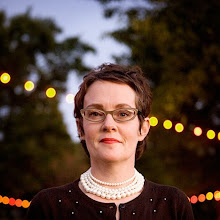
Horse statue in Venice. All photos courtesy the author.
What a relief to see a lot of art and to see a lot of artists dealing overtly with political topics. This year's Venice Biennale was of a minimum guaranteed quality (except where it was shockingly bad), but that sometimes makes for a sluggish show overall. I was thrilled to get a jolt of recognition through works addressing a range of contemporary issues although not each work was equally successful.
I espied Verrocchio's Colleoni Monument, started in 1479, while taking refuge under an umbrella to escape a hot day slogging between far-flung pavilions scattered around the city. Colleoni is a master of the universe but Verrocchio presents us with a brutish boor of a conquerer. (Art has always been political in some form or another, and denying that make the speaker seem very dull indeed.)

Adel Abidin work in the Iraqi pavilion.
I found Adel Abidin's video and installation a funny antidote to Verrocchio's conquering hero. Two white guys play Star Wars with fluorescent tubes from the office ceiling light; the choreographed dance made a nice mockery of the powers fighting over (name one) Middle East country.

Ahmet Mater.
Ahmet Mater's work in the show The Future of a Promise mocks the simplistic political creed of the former US government that started two wars in the Middle East.

Allora & Calzadilla tank.
Jennifer Allora & Guillermo Calzadilla's installation Gloria at the American pavilion too made hay with politics. The sub-theme was war as competitive game. The best of their work is performative, which meant that some of the more static sculptural works were a bit inert without the animating presence of gymnasts.

A & C ATM machine / pipe organ.
This ATM machine drew a lot of attention and was evidently the most-used ATM in Venice for a few days!

A & C video.
I found this simple video the summation of Allora & Calzadilla's pavilion. The divided screen, the struggle of the men to stay horizontal was elegant, painful and provocative.
I was proud of the choice at the pavilion--there are so many deserving artists in the US but the choices were feeling like a queue for a job rather than an informed, or even inspired, challenge of what art can mean.

Lee Yongbaek, Korean pavilion.
Lee Yongbaek's work at the (South) Korean pavilion had some very nice work and some very bad work. This simple video, of old technology pulling new, seemed to capture the historical squeeze we are in today. We rush into the future with our new technologies without understanding old technologies and relationships. We embrace war without taking into account the impact on the conqueror and the conquered--war disrupts and destroys both societies in different ways, but destroy is the key word.
It was a pleasure to think beyond my own green box while in Venice, to feel re-connected to what artists around the globe are thinking and doing. Art can connect us across political and social boundaries, and given the precarious state of the world, we can use more politically-charged art.




No comments:
Post a Comment